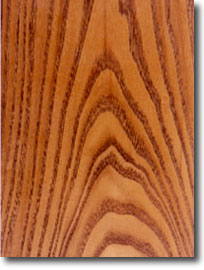 Locust (Robinia Pseudoacacia L.) initially appears quite similar to northern elm. In the Northern Song architecture treatise Yingzao fashi, locust and elm (yu) were categorized "miscellaneous hardwoods" of similar sawing difficulty. However, locust is appreciably more dense (.79-.81 g/cm3), and the surface is more coarsely textured.
Locust (Robinia Pseudoacacia L.) initially appears quite similar to northern elm. In the Northern Song architecture treatise Yingzao fashi, locust and elm (yu) were categorized "miscellaneous hardwoods" of similar sawing difficulty. However, locust is appreciably more dense (.79-.81 g/cm3), and the surface is more coarsely textured.
Locust is distributed throughout China, however the best is considered to come from northern China. Aside from its noted density, the timber is hard and very strong. The pores in the early wood can be relatively large; the grain is relatively straight but unevenly textured. It is relatively easy to dry, with little warpage; however, it tends to develop large cracks. After drying, the wood is quite stable and naturally resistant to moisture and insect damage. It is difficult to cut and to surface; however, afterwards, it reveals a lustrous surface.
Extract from:
Evarts, Curtis. C. L. Ma Collection: Traditional Furniture from the Greater Shanxi Region, 1999.
